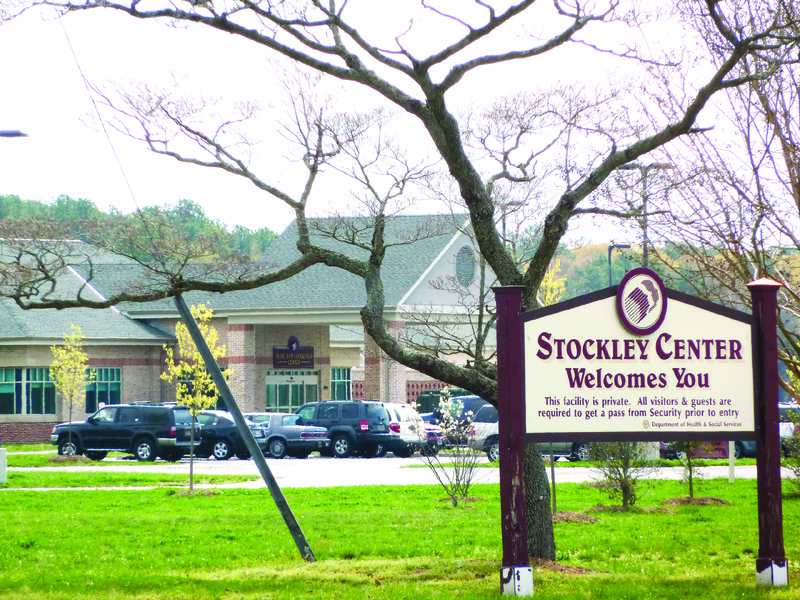Delaware’s Stockley Center, founded in 1921 as a care facility and home for adults with developmental disabilities, stands on a naturally rich tract of 750 acres at the headwaters of Indian River north of Millsboro. Over the past few months, the state’s Department of Health and Social Services has been gathering ideas on how the land and facilities there can be used to better the health and well-being of people in Sussex County.
In a recent letter to the editor, Health and Social Services Director Rita Landgraf noted that the Stockley property, adjacent to Sussex Central High School, includes 307 acres designated as the Stockley Center tract of the Doe Bridge Nature Preserve. She noted that in addition to the built resources at Stockley - including a 50-bed skilled nursing facility, residences for adults with disabilities, a full-size gymnasium and a daycare center - “its outdoor features are fantastic in their natural beauty, including miles of interlinking trails over varied terrain.”
Landgraf wants to know whether the Stockley property offers opportunities to help the people of Sussex become healthier: “In our state, preventable chronic diseases like diabetes and heart disease are now among the leading causes of death. Lack of physical activity, tobacco use and poor nutrition are the most common risk factors for chronic disease. Obesity in Delaware has more than doubled in the last 20 years, and nearly 60 percent of Delaware’s children do not get the recommended one hour a day or more of physical activity. In Sussex County alone, more than 46,000 people are obese. One way we can be a healthier community is to fully use the resources around us to support healthy choices.”
The state is taking a look at suggestions for how the property could be used. Stay tuned in the next few weeks for next steps in the process.
Schroeder mural mystery
I wrote recently about the giant Schroeder mural that seemed to have disappeared from the cafeteria of the Lewes School. No encouraging news so far. Here’s a letter I received recently from Bill Macintire: “I remember being told that the Schroeder mural of the Cape had been broken up to bits and thrown in the Dumpster. I don't recall who told me that. I do remember shortly before that supposedly happened going to an oyster dinner in the cafeteria and they were using the mural as a bulletin board - it had been entirely covered up with paper and student projects were pinned to it.
“I remember the mural very well from my school days in elementary and high school (class of 1977 - we were the first class in the new school that they tore down a couple of years ago, so I had two years in the old building). “I would love to hear that it still survives, but I'm guessing not. Very sad.”
Rehoboth’s benches and the VIA
Gail Shaffer, historian for Rehoboth’s Village Improvement Association, called last week following a column that mentioned the unique Boardwalk benches in Rehoboth. “The VIA originally had 10 of them built and placed on the Boardwalk in 1924,” said Shaffer. “They cost us $27.30, which was a lot of money back then. They were immediately popular and we had to order five more. That little flippy back thing - that was our idea too.” Shaffer said the VIA has been responsible for many improvements over the years including trees around Lake Gerar and the big, curved table where the mayor and commissioners sit for meetings in the convention center.
King Charles and Scarborough
I understand a lot of the names of the streets in Rehoboth, but recently it occurred to me that King Charles seems out of place. I asked Jay Wingate if he had any clues as to its origin. “I really don’t,” said Jay, “but here’s another for you: how about Scarborough, that runs parallel to King Charles?”
Mayor Sam Cooper said he didn’t know why those streets are named as they are but said he thought they dated as far back as an 1867 plat plan for the fledgling resort. “I think it was a group out of southeast Pennsylvania that laid out those streets,” said Cooper.
A little internet research indicated that a noted doctor named Scarborough was the attending physician at the death of England’s King Charles II in 1685. Of course that was long before Rehoboth Beach was a gleam in a developer’s eye, but perhaps the men who did lay out the city were devoted Anglophiles. It might be worthy to note that King Charles I was executed in 1649 during the insurrection led by Oliver Cromwell. One of those implicated in the execution, Edward Whaley, eventually fled England when King Charles II was restored to power. There has long been speculation that the small settlement of Whaleysville - just south of the Delaware line on the edge of the Great Cypress Swamp - took its name from that same family hiding out from the revenge-minded crown.

















































